As is the case with other commonplace objects, we often lose perspective on the significance or history of the things that surround us. I found delving into the history of the key was useful to lay a foundation for my project, what follows is a very abridged version of the development of the key: A Brief History of the Key
So to return to the question at hand, What is the key? A definition from the Oxford English Dictionary: 1.a: n An instrument, usually of iron, for moving the bolt or bolts of a lock forwards or backwards, and so locking or unlocking what is fastened by it; usually fitted on the bit or web with more or less elaborate incisions, etc., adapted to the wards of the lock. Other dictionaries and resources contain similar explanations; our definition of the key typically refers to the unlocking of a security mechanism. What I found most salient was the key's relationship with the lock is embedded in the definition. I address this dependence in Thing-Thing Relations, but the basic conclusion we should draw from the formal definition is that a key is intended to open, or gain access to a previously secure area. An alternate explanation that I've proposed: a key is a method of authentication to a non-human barrier.
In the majority of modern societies, our mental image of the key is probably based on the most common forms of the object, the ones we deal with most frequently. I've identified the three most routinely used types as the house key, the skeleton key, and the car key. (For a point of clarification and reference, these are based off of my experience and the norms of American culture/society):
The House Key
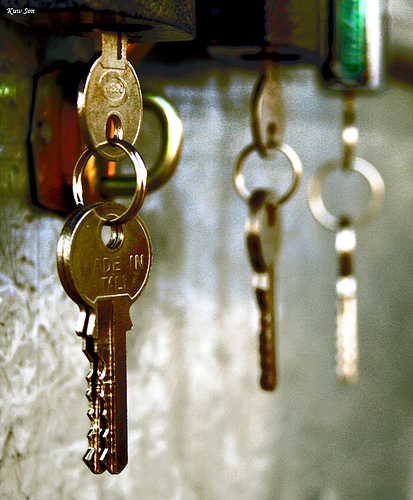
The familiar form of the house key has become synonymous with the 'standard key'. It certainly is used by the vast majority of our acquaintances, and I'd be willing assume that we all have at least one of these in our possesion. A more detailed description of the mechanics behind the traditional lock and key can be found in How.
The Car Key
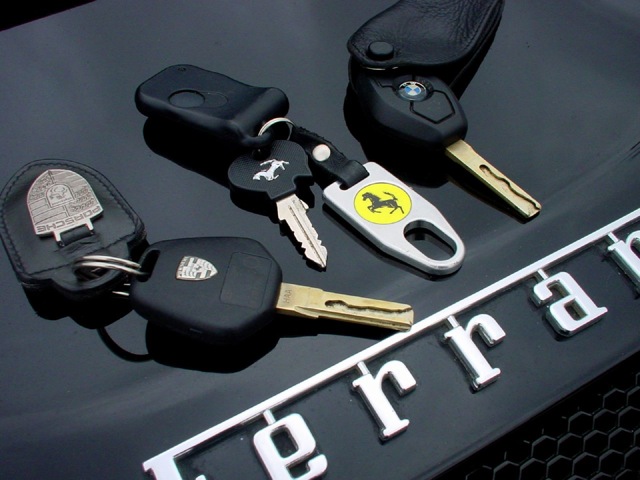
The Skeleton Key
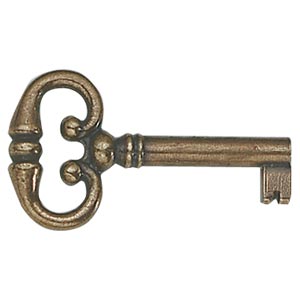
Historically this is the form that the key took for the years preceeding the pin-tumbler form of key (exampled by the house key). While the use of these particular keys may have been slowly phased out, the skeleton key is prized as a beautiful object of antiquity. This is one case in which the existance of the correlating lock is less important; many antiques shops sell these skeleton keys regardless of practical usage.
So what else can we consider a key? With technological advancements, we are now entering into a new frontier in which the definition of the key needs to be examined and throughly analyzed. Should we consider things like keycards and codic 'keys' as a key? What about a fingerprint? Is there the inherent understanding that a key is a physical whole with a traditional shape? What do we do with these new 'keys'?
I obviously don't have answers for all of these questions, but am of the opinion that we must be open minded about our definitions and willing to revise our classifications as our world changes. If we take the formal definition of the object at face value, than anything that allows entry can be considered a key.
The Codic Key
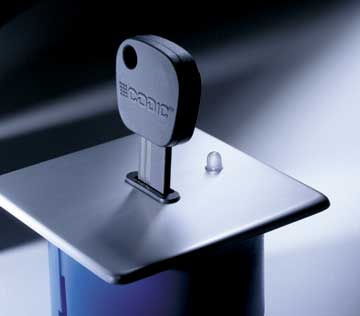
The Codic key is insterted into a reader that picks up the specific data entry encripted onto the 'key' either via imbedded chip or magnetic strip. An interesting point about the Codic version of the key is that it maintains the same form of the trational house key (with larger handle and thin instertion blade which is what opens the lock); the physical reference indicates that there is an underlying bias and feelign of what the key's physical shape must entail.
The Keycard
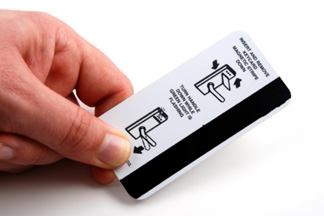
Back to The Key main page
